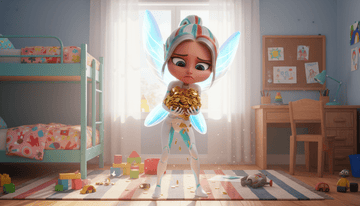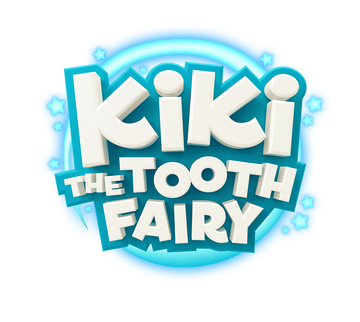The Tooth Fairy is tightening her purse strings in 2025. For the first time in 27 years, the average payout per tooth has seen its biggest decline, dropping 14% from $5.84 to just $5.01. If you're wondering whether you're paying too much or too little when your child loses a tooth, this complete guide breaks down exactly what the Tooth Fairy is paying across America this year.
The Big News: Tooth Fairy Payouts Hit Record Decline
According to Delta Dental's 2025 Original Tooth Fairy Poll, which has tracked Tooth Fairy trends since 1998, the average value of a lost tooth dropped from $5.84 in 2024 to $5.01 in 2025. This 14% decline marks the most significant year-over-year drop in the poll's history.
Even more surprising? For the first time since 2000, the stock market has outperformed the Tooth Fairy. While the S&P 500 surged 26% between January 2024 and January 2025, tooth payouts declined, breaking the traditional correlation between the economy and Tooth Fairy generosity.
2025 Tooth Fairy Rates by Region

Where you live makes a huge difference in what the Tooth Fairy leaves behind. Here's the complete regional breakdown for 2025:
South: $5.71 per tooth
The South leads the nation and is the only region to see a year-over-year increase from $5.51 in 2024. Seems like Southern hospitality extends to the Tooth Fairy 🤠
West: $5.69 per tooth
Despite ranking second nationally, the West experienced a dramatic 33% drop from last year's whopping $8.54. This brings western payouts back in line with 2021 levels ($5.54). States in this region include Washington, Alaska, Arizona, California, Colorado, Hawaii, Idaho, Montana, Nevada, New Mexico, Utah, and Wyoming.
Northeast: $4.59 per tooth
The Northeast saw a 33% decline, dropping from $6.87 in 2024. This marks the first time the region has fallen below $5 per tooth since 2020.
Midwest: $3.46 per tooth
For the second consecutive year, the Midwest trails significantly below the national average, remaining under $4 per tooth.
First Tooth vs. Regular Teeth: The Premium is Shrinking
Most families agree that the first lost tooth is the main event. According to the survey, 33% of parents report that the Tooth Fairy pays more for a child's first tooth. In recent years, even this special premium has decreased:
-
First tooth average in 2025: $6.24
-
First tooth average in 2024: $7.09
-
Decline: 12%
Regular teeth, after the first, now average about $5.01, which means first teeth command about a $1.23 premium. This gives parents a way to make that initial milestone extra special.
The Long View: How Tooth Fairy Rates Have Changed
While 2025 brought declining payouts, the long-term trend tells a different story. Since 1998, when the average tooth fetched just $1.30 (https://www.seattleschild.com/how-much-does-the-tooth-fairy-pay-for-a-tooth-heres-the-latest/), the Tooth Fairy's generosity has increased by 285%.
Here's how rates have evolved:
-
1998: $1.30 per tooth
-
2023: $6.23 per tooth (record high)
-
2024: $5.84 per tooth
-
2025: $5.01 per tooth
The recent decline reflects broader economic concerns, with many families feeling budget pressures despite a strong stock market.
What Parents Are Actually Paying
While averages give us a baseline, individual families vary widely (https://www.dentalcarealliance.net/dental-practice-transitions/how-much-does-the-tooth-fairy-pay-per-tooth-in-your-state/) in what they leave:
-
37% of parents give at least $5 or more per tooth
-
Most common range: $1-$5 per tooth
-
Reported extremes: Some parents report leaving as little as 50 cents, while others leave up to $20 or even $50 per tooth
Geography isn't the only factor. Parents cite these factors when determining payouts:
-
Spare cash on hand (46% of parents say this is the biggest factor)
-
Child's age
-
Tooth condition (well-brushed teeth may earn more)
-
What peers receive (to avoid playground comparisons)
-
Family traditions
Global Tooth Fairy Rates: How the U.S. Compares
American children actually receive among the lowest payouts globally when converted to other currencies. Here's what kids around the world are getting:
-
🇨🇦: $7.13 (highest among surveyed countries)
-
🇺🇸: $5.01
-
🇮🇪: €4.80 (approximately $5.23 USD)
-
🇪🇸: €4.80 (approximately $5.23 USD)
-
🇬🇧: £3.97 (approximately $5.15 USD)
-
🇧🇷l: R$28.68 (approximately $5.58 USD)
Different countries have different traditions, with many featuring a tooth mouse (France & Spanish speaking countries) instead of a fairy, but the concept of exchanging teeth for rewards is nearly universal.
Why Are Tooth Fairy Rates Declining?
The Delta Dental survey, which polls 1,000 parents of children ages 6 to 12 annually, suggests several factors:
Economic Uncertainty
Despite a strong stock market, many families are feeling stretched by inflation in everyday expenses like groceries, housing, and childcare.
Breaking from Tradition
For 15 of the past 18 years, Tooth Fairy payouts mirrored the S&P 500. The divergence in 2024-2025 suggests parents are making independent decisions based on household budgets rather than broader economic indicators.
Teaching Financial Responsibility
Nearly 1 in 5 parents (19%) say the Tooth Fairy helps teach their child about the value of money, and modest payouts may be part of that lesson.
Budget-Friendly Tooth Fairy Alternatives
Not every family can afford $5 per tooth, especially when children have 20 baby teeth to lose. Here are creative alternatives that maintain the magic without breaking the bank:
Creative Rewards:
-
Chocolate gold coins
-
Small toys from the dollar store
-
Special stickers
-
A note from the Tooth Fairy with a "tooth fairy receipt"
-
Foreign currency from family travels
-
A small book
Make It Special Without Money:
Try Tooth Fairy letters that focus on praising good dental hygiene rather than monetary rewards. You can even personalize video messages that celebrate your child's milestone.
→ Looking for free Tooth Fairy letter templates? Download our printable templates and create magical notes that cost nothing but mean everything to your child. Plus, surprise them with a personalized video message from Kiki the Tooth Fairy herself!
What This Means for Your Family

With 20 baby teeth to lose, the total Tooth Fairy bill adds up:
-
At $5.01 per tooth: $100.20 total
-
At $6.24 for first tooth, $5.01 for others: $101.43 total
-
At the Midwest average of $3.46: $69.20 total
-
At the South's $5.71 rate: $114.20 total
The good news? You have about 6 years (typically ages 6-12) to spread out this expense!
Tips for Deciding Your Rate
Consider these factors:
-
Start with what you can afford consistently. Children lose teeth over several years, so pick a rate you can maintain.
-
Factor in your child's friends group. If your child asks why they receive less than friends, have an honest conversation about how different families have different traditions.
-
Use it as a teaching opportunity. Reward well-brushed, healthy teeth with slightly higher payouts to encourage good dental hygiene.
-
Don't forget the national average is just that—an average. Plenty of families pay less, and that's perfectly fine.
-
Consider making the first tooth special. The 12% premium for first teeth ($6.24 vs. $5.01) is a tradition many families love.
The Bottom Line
In 2025, the Tooth Fairy is paying an average of $5.01 per tooth nationwide, with significant regional variations. While this represents a 14% decline from last year, it's still nearly four times what kids received in 1998.
Remember, the magic of losing teeth isn't really about the money—it's about celebrating a childhood milestone, encouraging good dental habits, and creating memories that last long after the Tooth Fairy's final visit.
Whether you leave $1 or $10, what matters most is making your child feel special and keeping the magic alive (link to: /blogs/kikis-blog/how-old-is-the-tooth-fairy) in whatever way works for your family.
🎁 Ready to Make Your Child's Tooth Loss Extra Magical?
Order a personalized video from Kiki the Tooth Fairy. Imagine your child's face when they see the Tooth Fairy speaking to them directly! No matter what amount the Tooth Fairy leaves under the pillow, a custom video message makes every lost tooth feel like a million-dollar moment.
→ Get Your Personalized Video Message from Kiki Now
Plus, download our free printable Tooth Fairy letter & worksheets templates to add even more magic to the experience!






